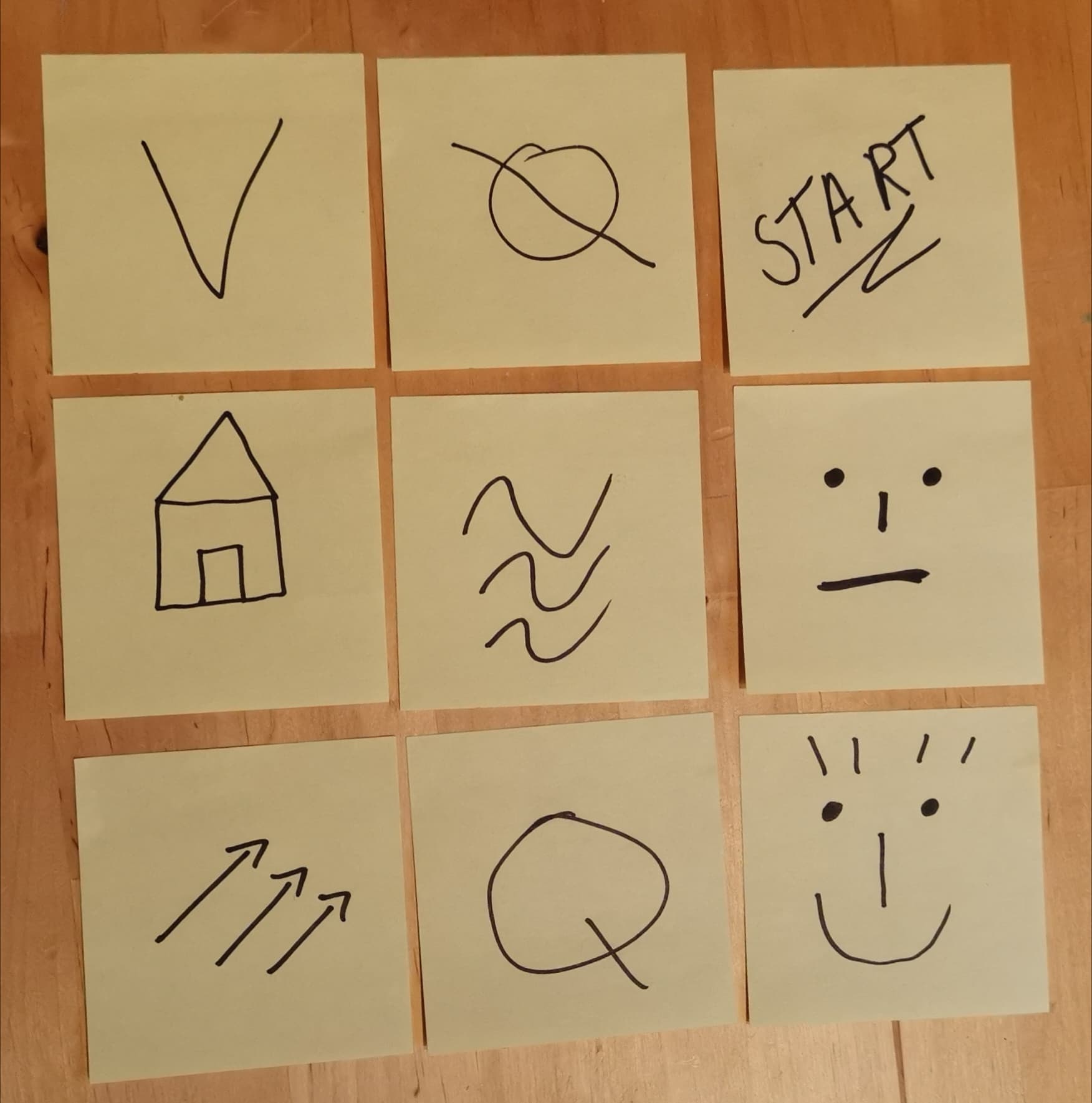Step 1
Display the set up to the participant/s with the sticky notes all of a single colour in a 3×3 square and explain to them the setup
Step 2
Explain that they will be starting from the top left-hand sticky note, and you, the instructor, will be counting up incrementally out loud. With each step counted, the participant/s will move from one sticky note to the next in their minds horizontally or vertically but NOT diagonally. It is important that the participant/s do not disclose which sticky note they are on.
Then, you as the demonstrator shall remove one sticky note at a time, and will eventually guess their location by narrowing their position down to 1 remaining sticky note.
Step 3
Begin the demonstration, and by implementing the trick, remove sticky notes with every count.
Step 4
Repeat this until you have narrowed down the participant/s to a single sticky note.
Step 5
Ask the participant/s whether they can guess how you have done it.
Step 6
Allow them to observe the set-up and see if they can notice what the trick is.
- If the participant/s remains dubious of the demonstration, ask them to pick which sticky note they would like to start from (make sure you know from where they start from)
- You may do this with 1 participant, or with more than 1 participant at the same time
The demonstrator has to be wary not to remove sticky notes to the point where they leave some sticky notes isolated from the rest since participants could possibly be on that sticky note, and are unable to move as a result. Counting should be done to move the participants where the demonstrator wants them to go. Ideally, not on the coloured squares, they intend to remove next.
The demonstration can be set up in a way such that you can read the participant’s mind
Does it matter from where I start?
Not at all! You can start from whichever square you would like!
Am I allowed to move diagonally?
You are only allowed to move left, right, up and down.
Could you do this with a differently shaped grid?
Yes, you can. Although the bigger you make it, the trickier it would be for me to track.
Why does it work for more than 1 person at a time?
There is a general pattern in the way everyone moves on the grid which I know, and am able to use!
Where can I see more like this?
Online there are a lot of Youtube videos illustrating this. The demonstrator doesn’t even have to be there with you and it still works!
At no time will the demonstrator know where the participants are on the 3×3 square of sticky notes. In fact, it is not necessary for the demonstration. The 3×3 sticky notes can be visualized in the mind of the demonstrator as having alternating colours – similar to a chessboard. Since the participants can only move in lateral directions if they were to move an even number of moves they don’t change colour. But were they to move an odd number of moves, they would change coloured squares.
With this fact, the demonstrator may remove squares one a time that they know the participants are not on until 1 square remains.
The 3×3 square of sticky notes can be split up into 2 distinct groups. Those squares that can be reached in an odd number of moves (which will be coloured black), and the squares that can be reached in an even number of moves (which will be coloured white). From this, one realizes the fact that if a participant is on a certain coloured square, after an even number of moves, they will land on the same coloured square they started on. But if they move an odd number of moves, he will switch coloured squares.
If they start on a black square and you count 3 moves, then you know that they will be on a white square. Which in turn means you can remove some sticky notes which are coloured black in your mind. Similarly for the white squares.
As you remove the squares, do not leave any that are not connected to the rest of the grid by, up, down, left or right movments.
Applications
Although there is no direct application of this particular demonstration, it uses the fact that the odd and even numbers partition the integers into two separate groups.




